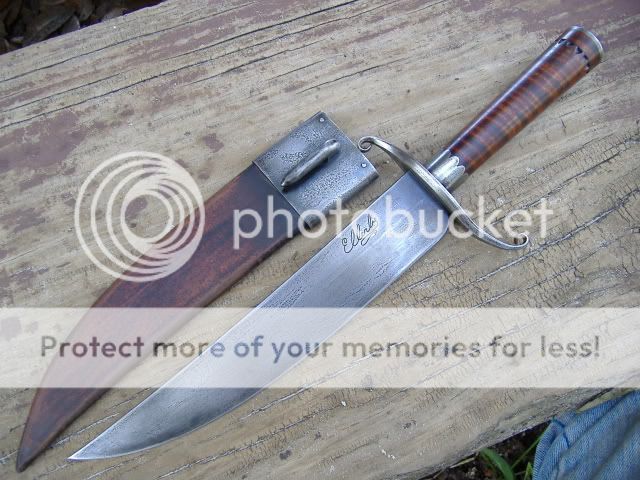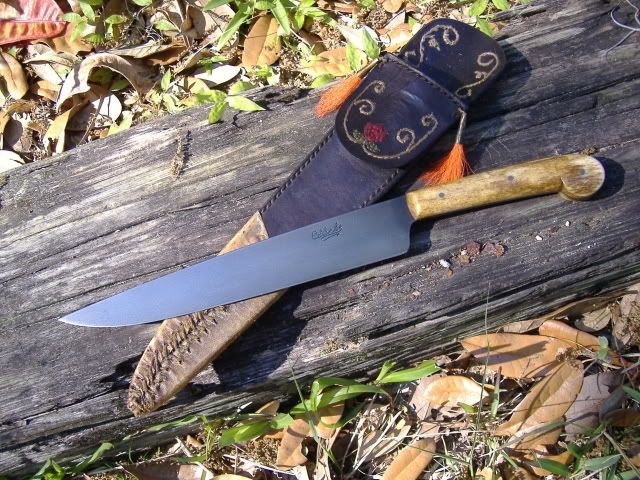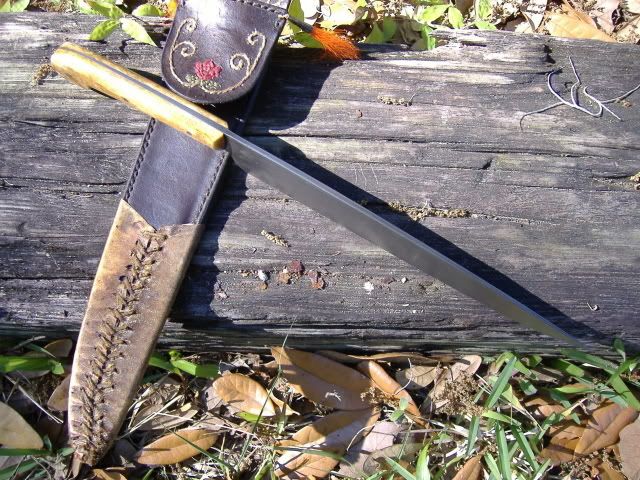Found a wealth of knifemaking links and had been looking them over. The possibilities are seemingly endless from dinosaur bone to mammoth and walrus fossil ivory to flamed birch and tiger-striped and birdseye maple. Lots of exotic woods and horn. Many Scandinavian custom knives to look at too. One blade company had antiqued rough looking textured high carbon blades which would work well especially since they are stamped with the makers mark RB ( my initials).
What would look really nice is a Damascus bladed traditional knife with a blade that matches the pattern of the wood handle such as tiger-stripe or ladder patterned Damascus with curly tiger-stipe Maple flowing in the same direction.
My problem is I don't know what blade shapes are appropriate for a 18th. century patch knife or hunting knife. The Viking Sax blade may be appropiate other than that I have no clue. Should pay more attention to details. What style would be a safe PC choice of blades? I like the hunters longknives. A time proven practical and useful design is what I am looking for. The choice of handle should follow function as well.
I like daggers too. Daggers have always been around but even those blades vary in style. A dagger which can be thrown might not work well with a burl handle because of irregularities in the grain. Highly figured wood is often weaker.
Any suggestions for a PC fixed blade hunting knife or patch knife blade type? Just daydreaming about all the possible combinations.
What would look really nice is a Damascus bladed traditional knife with a blade that matches the pattern of the wood handle such as tiger-stripe or ladder patterned Damascus with curly tiger-stipe Maple flowing in the same direction.
My problem is I don't know what blade shapes are appropriate for a 18th. century patch knife or hunting knife. The Viking Sax blade may be appropiate other than that I have no clue. Should pay more attention to details. What style would be a safe PC choice of blades? I like the hunters longknives. A time proven practical and useful design is what I am looking for. The choice of handle should follow function as well.
I like daggers too. Daggers have always been around but even those blades vary in style. A dagger which can be thrown might not work well with a burl handle because of irregularities in the grain. Highly figured wood is often weaker.
Any suggestions for a PC fixed blade hunting knife or patch knife blade type? Just daydreaming about all the possible combinations.







